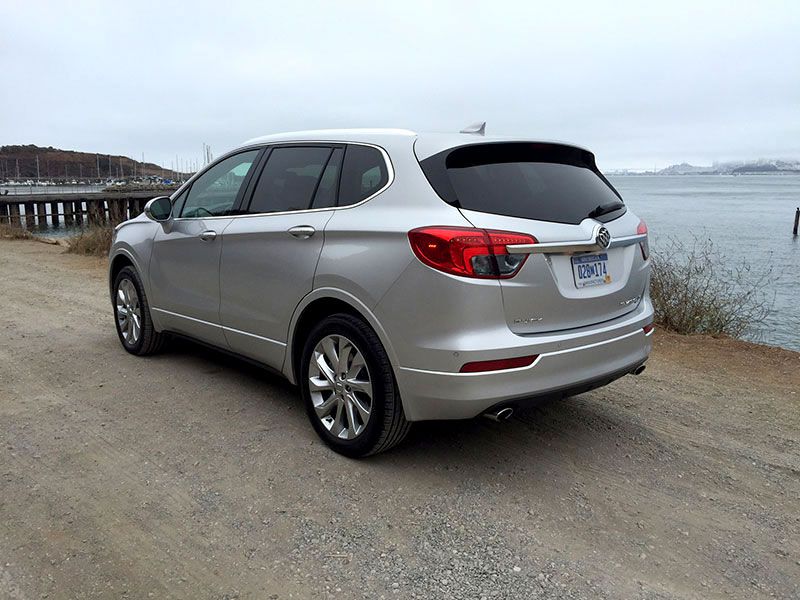Recent Articles
Popular Makes
Body Types
2017 Buick Envision Road Test and Review
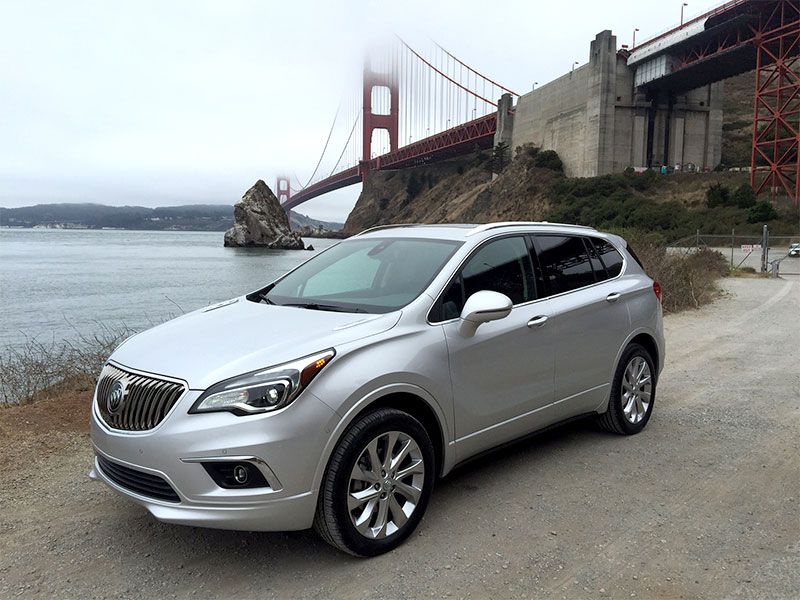
2017 Buick Envision exterior front angle ・ Photo by Buick
We have long since become accustomed to the idea of a Buick truck. After all, the Enclave SUV has been with us for eight years, Buick’s former marketing slogan—“Premium American Motorcars”—persists only in the memories of Baby Boomers. So the arrival of this third SUV in the lineup—the Envision—is hardly startling. Prior to the Envision Buick’s other two SUVs (the Enclave and the subcompact Encore) already accounted for well over half of Buick’s sales. And in fact the Envision is in Buick’s premium tradition.
All-American—With an Asterisk
But Envision is obviously not a “motor car” in the sense of, say, LaCrosse, Buick’s elegant sedan flagship. And it’s not exactly American, either. Though it was designed and engineered in Michigan, assembly takes place in Yantai, China, a little east of Shanghai. That gives Envision the distinction—some might say dubious—of being the first American brand to be imported from China. National origins notwithstanding, the Envision fills a conspicuous gap in Buick’s product lineup, a roomier five-passenger wagon in the same general size class as the Acura RDX and Lincoln MKC, a pair of competitors the design team targeted as segment benchmarks. It’s also interesting to note that in dynamic development, particularly interior noise levels, the design and engineering team benchmarked another Buick, namely the Enclave.

Firm Foundations
The Envision’s general layout—unitbody (frame elements and body shell integrated, or unitized), with front- or optional all-wheel drive—is essentially universal in this popular and growing vehicle category. However, the Envision has a structural distinction. Unlike so many of its General Motors contemporaries, its platform—its architecture, in industry-speak—is dedicated to this one vehicle. It’s not shared with any other GM vehicle, at least for the time being. More important, based on a day of driving the new Envision in and around California’s Napa Valley, it seems to be an exceptionally solid architecture. That’s good news; in contemporary vehicle design, structural rigidity is the starting point for handling traits, ride quality, interior noise levels, and crashworthiness.
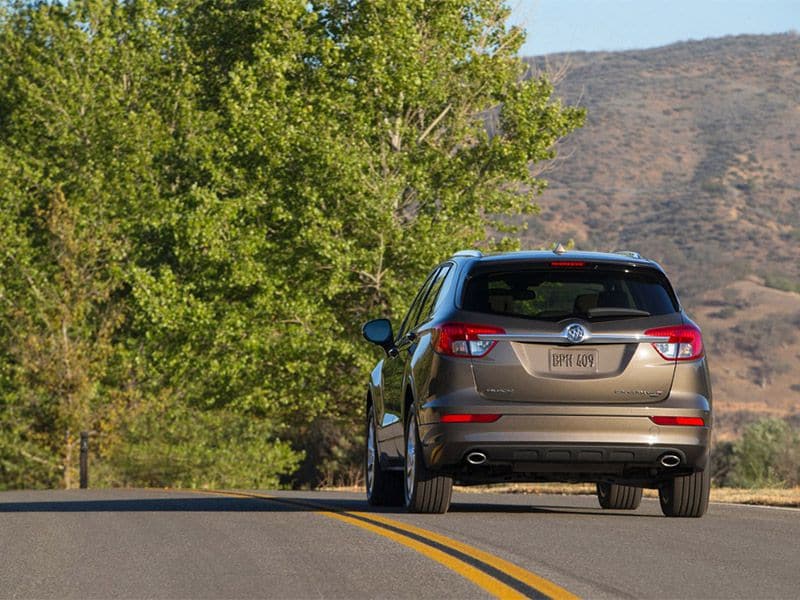
Two Powertrain Choices
While the Envision’s structure is exclusive, its powertrain choices—engines, transmission, and all-wheel-drive systems—can be found in other GM vehicles. There are two engines, a 197-horsepower 2.5-liter 4-cylinder, standard in the lower trim levels; and a turbocharged 2.0-liter four rated for 252 hp, standard in the upscale Premium and Premium II trims. Both engines are paired with a 6-speed automatic transmission. EPA fuel economy ratings for the 2.0-liter turbo, which includes stop/start technology, are 20 MPG city, 26 MPG highway. The 2.5-liter, a late arrival in the Envision lineup, has yet to be rated by the EPA. All-wheel drive is available—standard with the Premium models—and there are two versions, basic and more sophisticated, the latter with a twin-clutch feature when paired with the turbocharged engine.
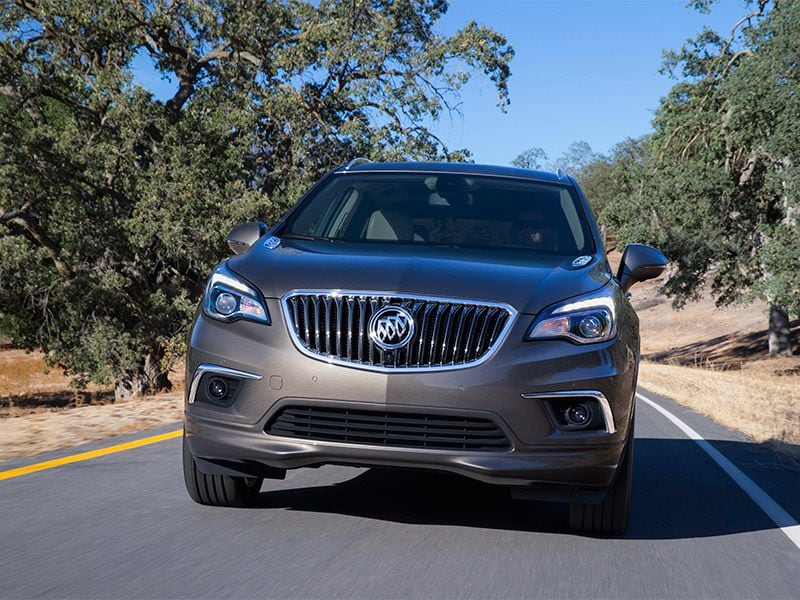
The Eyes Have It
With a strong character line running upward from the front wheel arches to the taillamps, the Envision has an attractive, contemporary look, with proportions that lend a modest suggestion of athletic character. It’s a suggestion that’s not really reinforced by the Envision’s dynamics, but more on that later. The key point here is that these styling notes could just as easily apply to a good many of the vehicles populating this busy market segment. And like the most readily identifiable of those vehicles, the Envision’s unique design feature is its face, specifically that traditional Buick waterfall grille. Buick has been experimenting with its signature grille—the Cascada convertible represents a total departure from the tradition, and the mouth-watering Avista concept coupe suggests evolutionary changes to come—but for the Envision the waterfall reinforces a premium image and Buick identity.
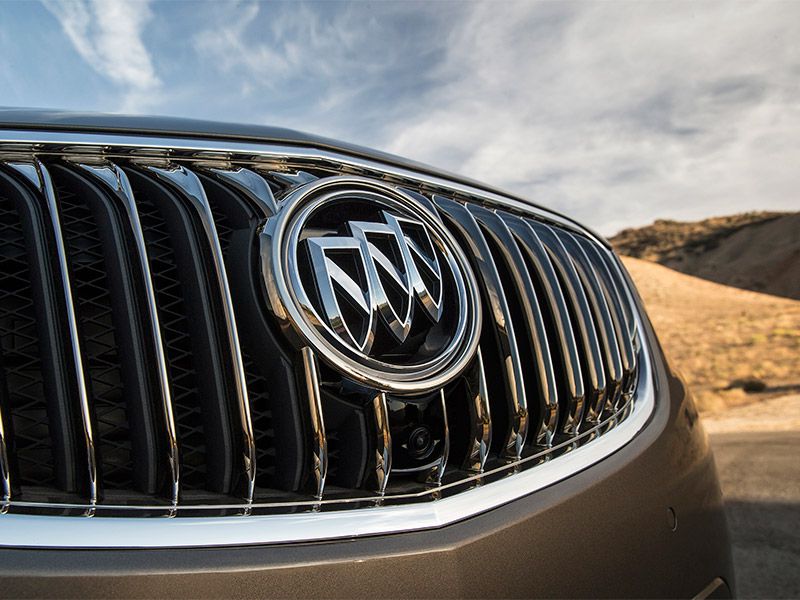
Photo by General Motors
The Game of Inches
At 183.7 inches (on a 107.6-inch wheelbase), the new Buick Envision is 15.3 inches longer than the little Encore and 18.2 inches shorter than the three-row Enclave. That wheelbase is more or less mid-pack in this class, but in terms of overall length the new Buick is among the biggest, similar in size to the Acura RDX and substantially longer than the Audi Q5 and Lincoln MKC. That translates as one of the roomiest interiors in this class, plenty of legroom for the outboard rear seat passengers, as well as a generous cargo hold: almost 27 cubic feet with the rear seatbacks upright, just over 57 cubic feet with the rear seats folded forward. There’s also plenty of headroom—almost 40 inches front, 38.5 inches rear. The turning circle—39.5 feet—is consistent with class standards; not exactly handy in tight parking lots, but far from unhandiest.
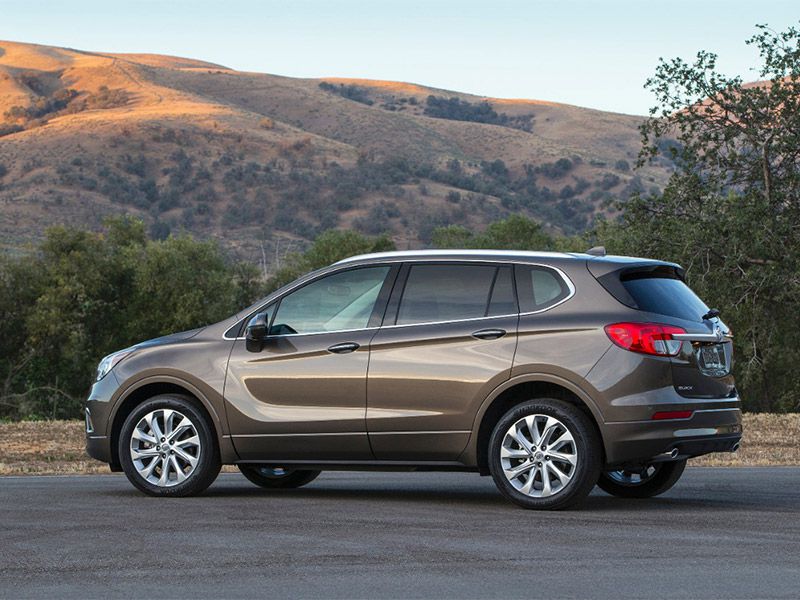
The Inside Story
In the Premium trims, the Envision has the look and feel consistent with Buick’s lofty ambitions for its new crossover. Materials and features are first rate—leather upholstery with contrast stitching; heated and ventilated seats; heated leather-wrapped steering wheel; power moonroof; a large (8-inch) center dash touchscreen with big, colorful icons and augmented by actual knobs and switches; and one of the best head-up displays in the business.
Consistent with the Envision’s dynamic character, the seats are relaxed fit but all-day comfortable. The interior décor is perhaps a little understated, but certainly elegant; the audio system should please most; climbing in or out is easier than in some competing utes. Also, the programmable power liftgate can be operated remotely.
If there’s any fault to be found inside this new Buick Envision, it’s the center rear seat. It's legroom-limited and not very comfortable—ideal for a friend you regard as expendable, but for family, not so much.
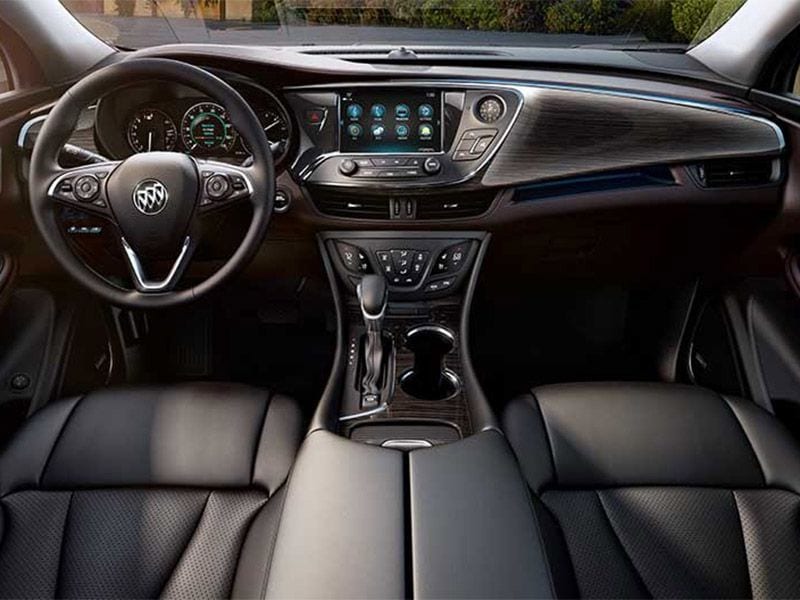
Safety
As a vehicle likely to serve as a family hauler, the Envision offers an array of safety and driver-assist features, many standard on higher trims (Essence and above). Standard active assist features include lane-keeping, lane-change alert, blind-zone monitor, rear cross-traffic alert, and a rearview camera with park assist, the latter standard in all models.
Adaptive cruise control with forward autonomous braking, which is becoming widely available in the industry, is available only in an optional Driver Confidence Package, and is limited to the Premium II trim. The package also includes 360-degree surround vision.
The Safety Seat Alert, which vibrates beneath the driver’s posterior when the vehicle’s various sensors decide it’s getting too close to something, is also limited to the top two trims. Some may find this feature helpful. Others, such as your humble narrator, find it irritating and perhaps a little too intimate in terms of driver/car relationships.
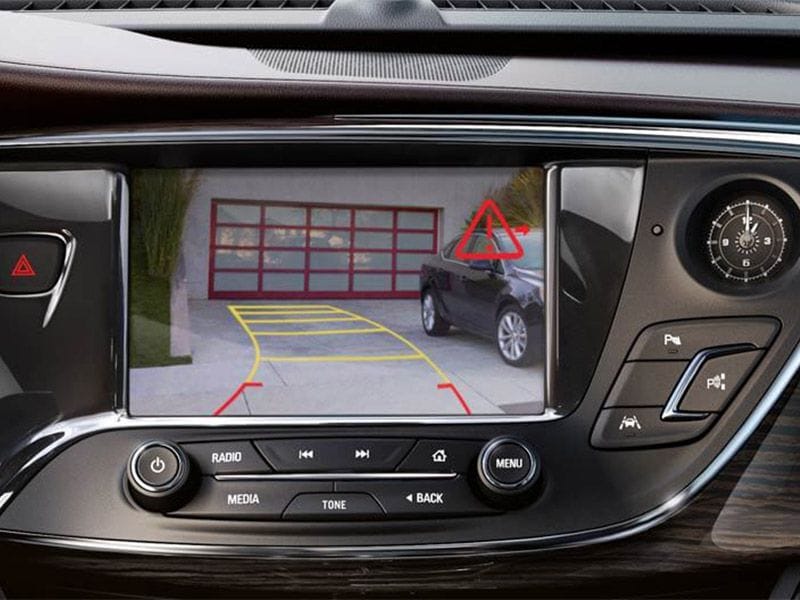
Easy Rider
The Buick chassis team may have benchmarked the Audi Q5 in tuning the Envision’s suspension, but the dynamic result isn’t really reminiscent of something with Autobahn heritage. Buick calls attention to the HiPer Strut front suspension in Premium editions (HiPer for High Performance, and the first such installation in a Buick SUV).
But while this may enhance Envision’s handling compared to the base trims—our experiences were limited to the Premium II version—it doesn’t yield responses that measure up to the sportier rides in this competitive set.
Pushing the Envision hard in corners, its responses go from leisurely to reluctant, and getting its substantial mass (over two tons) to change directions quickly isn’t on the menu. The electric-assist power steering is consistent with the general dynamic deportment; tactile information is minimal, particular in the first degree or two off center.
The 2.0-liter turbo delivers adequate thrust. We didn’t log any seat time with the base 2.5-liter engine, but removing 55 horsepower from the equation won't add urgency to Envision’s forward progress. On the other hand, if the Envision isn’t playful, it’s in good company—the same can be said for most of the vehicles in this class.
We can also say that there are no really bad habits in this Buick’s behavior, it’s eminently predictable, it’s nicely appointed inside, it’s quiet as a church at midnight, and it’s an eminently smooth operator on all sorts of surfaces.
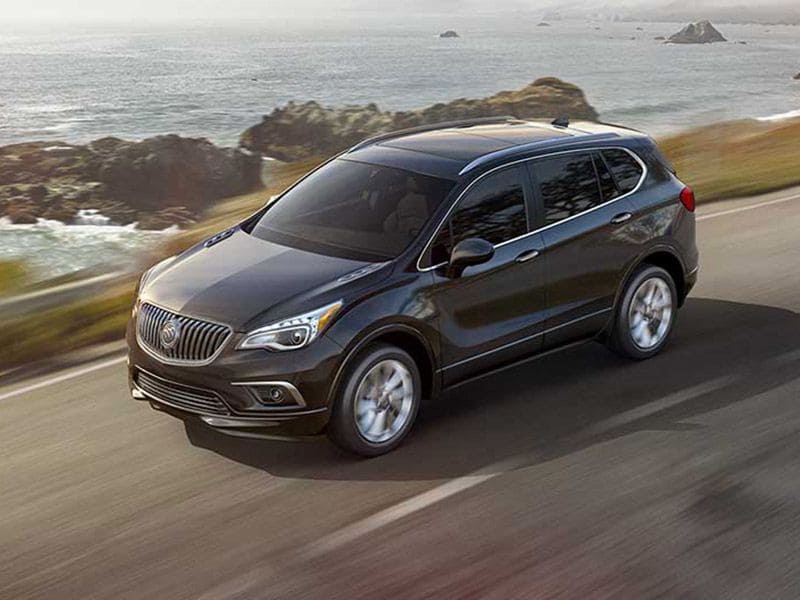
Photo by Buick
Pricing
The Envision made its US debut this summer, as a very late 2016 model, offered only in the top trims—Premium I and Premium II. For the 2017 model year Buick fleshes out the lineup with the basic Envision model, plus the Preferred and Essence models.
MSRPs range from $34,990 for a front-drive Envision to $45,885 for the top-of-the-line all-wheel-drive Premium II. Base MSRP for the front-drive Preferred is $36,795, and $38,645 for the front-drive Essence model.
Envision, Preferred, and Essence are powered by the naturally aspirated 2.5-liter 4-cylinder engine. Premium I (from $43,245) and II models include the turbocharged 2.0-liter engine and standard all-wheel drive.
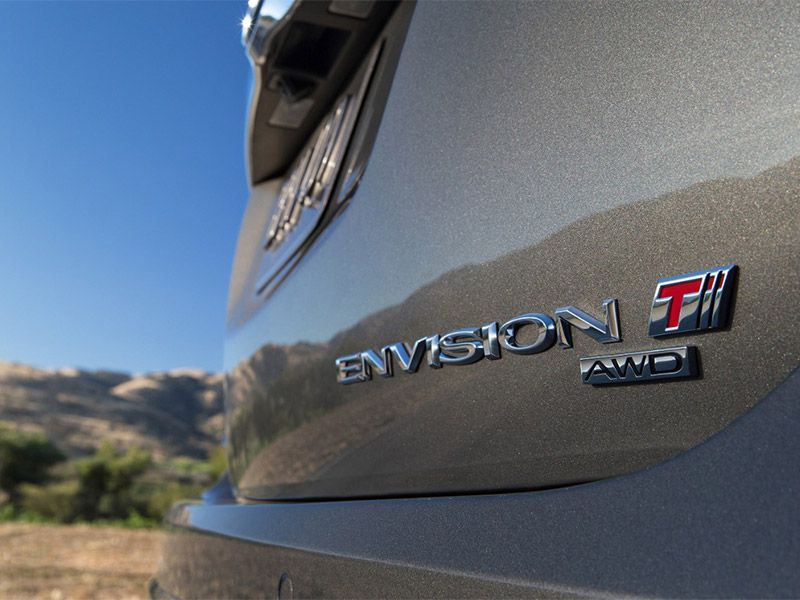
The Bottom Line
In a burgeoning SUV market segment crowded with appealing choices, straddling the murky boundary between premium and luxury, the Envision manages to stand out in two dynamic areas—smooth ride quality and an exceptionally quiet interior. Construction is solid, fit and finish measure up well, and interior appointments in the top trim level are attractive and high in quality.
However, checking all the boxes nudges the bottom line on the window sticker up toward the $50,000 frontier, which is definitely luxury territory. The Premium II interior is certainly posh, but is it as seductive as segment hotties like the Porsche Macan and Audi SQ5? But of course you’ll make your own call on that one.
